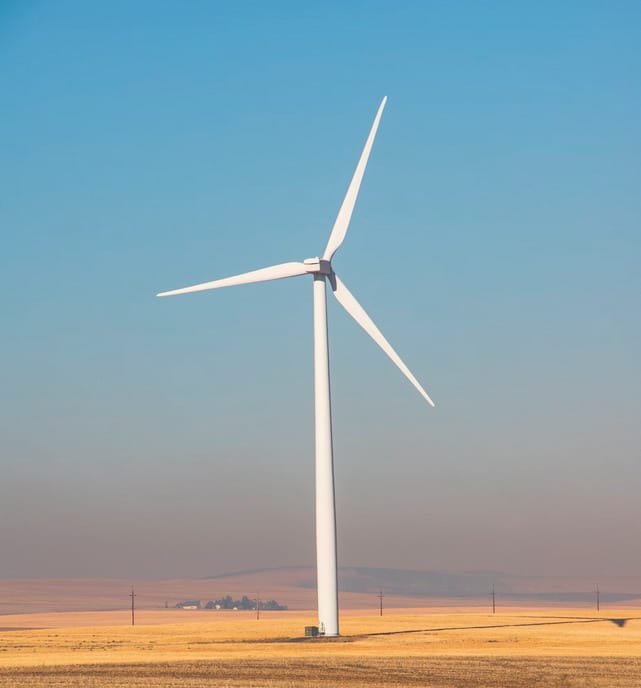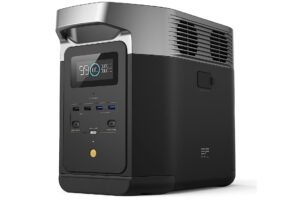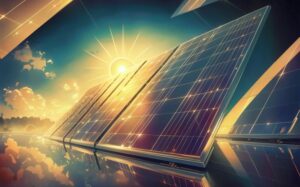Pros and Cons of Wind Turbines

Wind energy, captured through the use of wind turbines, represents a pivotal element in the global shift towards renewable energy sources. As nations strive to reduce their carbon footprint and combat climate change, wind turbines have emerged as a significant contributor to sustainable energy production. However, like any energy source, wind turbines come with their own set of advantages and disadvantages. This article explores the pros and cons of wind turbines to provide a comprehensive understanding of their impact on the environment, economy, and communities.
Pros of Wind Turbines
Being a technology that generates clean and renewable energy without consuming other resource, wind turbines have more pros and cons.
Renewable and Clean
Wind energy is one of the most sustainable forms of power available today. Unlike fossil fuels, wind is plentiful, inexhaustible, and produces no greenhouse gas emissions during operation, making it a clean energy source that significantly reduces environmental pollution.
Cost-Effectiveness
Once installed, wind turbines generate electricity at a very low marginal cost. The primary expense is the initial investment in equipment and installation. Over time, the cost of wind energy has decreased dramatically, making it one of the most competitive renewable energy sources.
Energy Independence
By investing in wind energy, countries can reduce their dependence on imported fossil fuels, enhancing energy security and stability. This shift not only has geopolitical advantages but also protects economies from volatile oil and gas prices.
Job Creation
The wind energy sector has been a significant source of employment, from the manufacturing of turbine components to installation, maintenance, and operation. These jobs contribute to economic growth, particularly in rural areas where wind farms are often located.
Land Use Efficiency
Wind turbines can be installed on existing farms or ranches, allowing for the dual use of land. This means that agricultural activities can continue while the turbines generate electricity, making efficient use of space in rural settings.
Cons of Wind Turbines
Considering that horizontal-axis wind turbines have been known to affect birds and bats, and produce some noise and visual pollution, we can acknowledge that there are also some drawbacks associated with the technology.
Intermittency
Wind energy is subject to the variability of weather, meaning electricity production can be inconsistent. This intermittency requires the development of storage technologies or backup systems to ensure a stable energy supply.
Visual and Noise Impact
Wind farms are sometimes criticized for their visual impact on the landscape and the noise produced by rotating turbine blades. These factors can lead to opposition from local communities, especially in scenic areas.
Impact on Wildlife
There have been concerns about the impact of wind turbines on wildlife, particularly birds and bats, which can collide with the blades. However, ongoing research and better site selection are helping to minimize these impacts.
Location Constraints
Effective wind energy production requires specific conditions, typically found in locations that are remote or difficult to access. This can increase the costs and complexity of transmitting electricity from wind farms to urban centers where it’s most needed.
Upfront Investment
Despite the long-term cost benefits, the initial capital required to install wind turbines is significant. This can be a barrier to entry for some communities or smaller energy providers, although government subsidies and incentives are helping to offset these costs.
Wind Turbines in the Modern Era
Wind turbines stand as monumental icons of the modern quest for clean energy, their silhouettes dotting landscapes from rural countrysides to coastal waters. These complex machines, which convert the kinetic energy of wind into electrical power, are at the forefront of the renewable energy revolution. Beyond their basic function, wind turbines embody the intricate relationship between technology, environment, and society.
Technological Innovation and Efficiency
Wind turbine technology has evolved significantly since its inception. Early models were simple and inefficient, but today’s turbines are marvels of engineering. They come in various designs, with the horizontal-axis turbines being the most common. These turbines have blades that resemble airplane wings, which are optimized to capture wind energy efficiently. Advances in materials science have allowed for lighter, stronger blades and more efficient generators, increasing their capacity to produce electricity.
The efficiency of a wind turbine is often measured by its capacity factor, which compares its actual output over a period to its potential output if it could run at full power all the time. Modern wind turbines can have capacity factors of 35% to 50%, a significant improvement over the past decades.
Integration into the Power Grid
Integrating wind power into the electrical grid presents both challenges and opportunities. Wind energy’s variability means that grid operators must balance supply and demand in real-time, requiring flexible and responsive power systems. Energy storage technologies, such as batteries and pumped hydro storage, play a crucial role in mitigating the intermittency of wind power. Moreover, advancements in forecasting models have improved the predictability of wind, enhancing grid stability and efficiency.

Wind Turbines installed offshore, image source: Unsplash
Environmental Considerations
The environmental benefits of wind turbines are well-documented, from reducing greenhouse gas emissions to conserving water resources. However, their environmental footprint extends beyond these positives. The manufacturing, transportation, and installation of wind turbines involve significant energy use and emissions, although these are generally offset by the clean energy produced over the turbine’s lifespan.
Decommissioning old turbines and recycling their components present ongoing challenges. Efforts are underway to develop more sustainable materials and recycling methods to ensure that wind turbines contribute positively to the circular economy.
Social and Economic Impacts
Wind turbines have a profound social and economic impact. They create jobs in manufacturing, installation, and maintenance, contributing to local and national economies. In rural areas, wind farms can provide a stable income for landowners and increase tax revenues for local governments.
However, the placement of wind turbines can lead to community concerns about landscape changes, noise, and wildlife impacts. Engaging with communities and stakeholders through the planning and development process is crucial to address these concerns and ensure the sustainable deployment of wind energy.

Wind turbine installed on top of a mountain, image source: Unsplash
Future Directions
Looking ahead, the role of wind turbines in the global energy landscape is poised to expand. Offshore wind, with its higher and more consistent wind speeds, offers vast potential for clean energy generation. Innovations in floating wind turbines could open up new areas for development, further increasing the capacity for wind energy production.
Moreover, integrating wind power with other renewable sources, such as solar energy, and leveraging smart grid technologies can create more resilient and sustainable energy systems. As technology advances and societal commitment to renewable energy strengthens, wind turbines will continue to evolve, playing a pivotal role in the transition to a cleaner, more sustainable energy future.
Conclusion
Wind turbines stand as a testament to human ingenuity in harnessing natural forces for sustainable energy production. While they offer substantial benefits in terms of environmental protection and economic growth, challenges remain in fully maximizing their potential.
Addressing the cons associated with wind turbines requires innovative solutions, from technological advancements in storage and efficiency to careful planning and community engagement. As part of a diversified energy portfolio, wind turbines will continue to play a crucial role in the global transition to renewable energy, contributing to a cleaner, more sustainable future for all.






